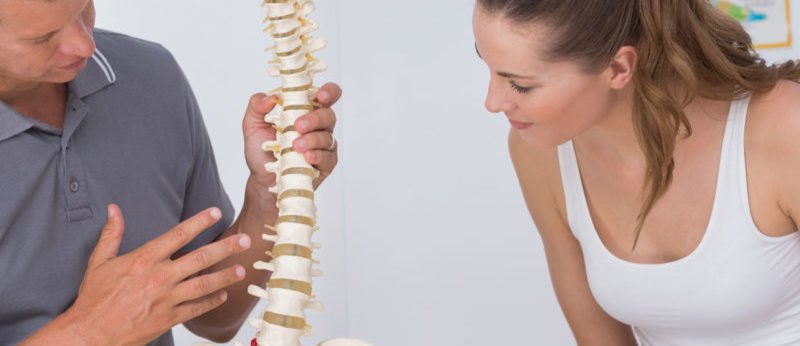Treating Hyperlordosis of the Spine
Category: Spine | Author: Stefano Sinicropi

Our spines are naturally curved, but if they curve too far in the wrong direction, problems can occur. If the lower portion of your spine curves too far inward, this is known as lordosis. When it is extremely exaggerated, it is classified as hyperlordosis. Today, we take a closer look at how doctors treat these extreme cases of lordosis known as hyperlordosis.
The Causes and Symptoms of Hyperlordosis
The most common cause of hyperlordosis is habitual poor posture over the years. This can also be exacerbated by other factors, such as:
- Obesity
- Frequently wearing high heels
- Acute spinal injury
- Neuromuscular disease
- Too much standing or sitting
- Weakened core muscles
Symptoms of hyperlordosis include low back pain, forward thrust hips, back stiffness, neck pain, muscle weakness and loss of range of motion.
Diagnosing and Treating Hyperlordosis
One of the bright spots about the condition is that it often doesn’t require invasive medical care to address the problem. Flexible or hypermobile hyperlordosis can oftentimes be treated with regular exercise, targeted core and spinal strength training, and posture awareness. These options may also be paired with other interventions, like over-the-counter pain relievers and a weight loss program. For younger adults and teens, soft or hard braces may also help to guide the spine into correct alignment.
If, however, you’re dealing with rigid hyperlordosis or your spine is causing you pain, you may need a more hands-on treatment. Your spine specialist will conduct a physical exam and an X-ray to determine the extent of the spinal curve. You may also undergo some neurological tests to rule out injuries to soft tissues or nerves.
Minnesota Hyperlordosis Surgeon
If you are one of the rare cases where surgery is advised after failed conservative care, your surgeon will walk you through your options. Oftentimes a surgeon can correct the problem using minimally invasive techniques so it is less taxing on the patient. A common procedure to address hyperlordosis is a spinal fusion, which fuses two vertebrae together in order to prevent them from shifting out of place. This procedure, combined with physical therapy and other conservative measures, has a high success rate for preventing further spinal curvature and relieving any pain caused by hyperlordosis.
So if your spine is greatly out of alignment or is causing you pain, reach out to Dr. Sinicropi and his staff today!